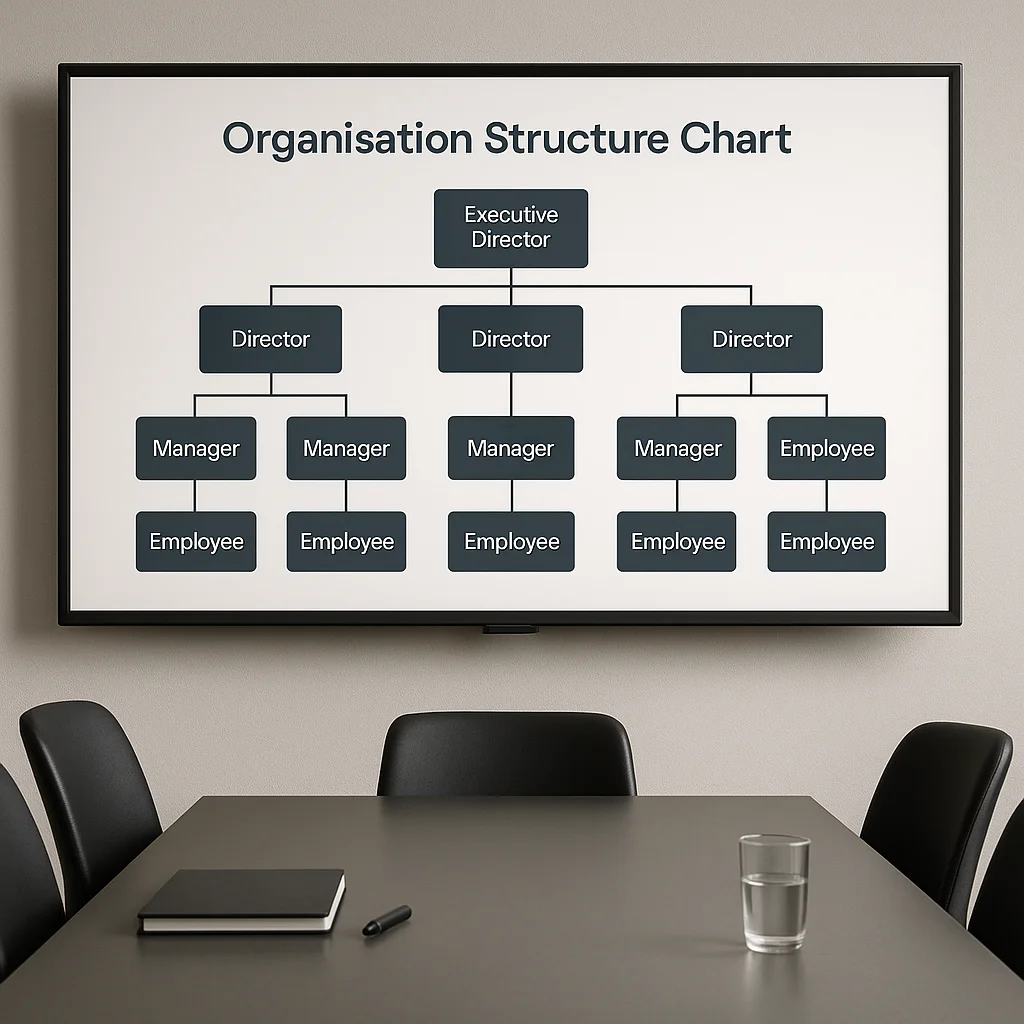Introduction
Effective organisational structures turn strategy into action. Leaders need to manage hybrid workforces, AI-enhanced roles, and quick market shifts alongside costs, culture, and compliance. Here are ten practical tips for designing or updating an organisation’s structure—arranging roles, spans, layers, reporting lines, and coordination mechanisms to achieve results. Use these tips whether you’re refining an existing hierarchy or creating one anew.
1. Start with Value Streams, Not Org Charts
First, map how value flows from idea to customer cash. Identify key value streams and activities that create, deliver, or protect value at each step. Define structural units based on these streams only after understanding them. This approach reduces hand-offs, shortens cycle times, and enhances accountability.
2. Choose Your Structural Archetype—Then Adapt It
Classical archetypes—functional, divisional, matrix, network, platform—serve as starting points rather than strict frameworks.
* Functional structures are known for their deep domain expertise and cost efficiency.
* Divisional designs, organized by product, geography, or customer segment, emphasize focus and P&L ownership.
* Matrix hybrids aim to share resources across various dimensions but may face challenges if decision rights lack clarity.
* Network and holacracy models are designed for speed and innovation but require a mature culture.
Choose an archetype that aligns with your organization’s value logic, then adjust spans, layers, and interfaces according to its size, talent pool, and regulatory context.
3. Flatten Where Technology Enables Oversight
Digital dashboards and AI insights enable managers to oversee more staff effectively. Aim for a span of 9-12 in knowledge roles and limit layers to six from CEO to frontline. Flattening reduces costs, speeds up information flow, and enhances empowerment, provided managers are trained in remote management and outcome-based feedback.
4. Create Modular, Re‑Configurable Units
In volatile markets, structural rigidity can be disastrous. Create modular teams with clear roles that can adapt to changing priorities. This allows you to quickly start new projects or eliminate outdated ones without major reorganization.
5. Clarify Decision Rights with Governance Guard‑Rails
The smartest structure fails if decisions bottleneck at the top. Adopt a transparent RACI or RAPID framework that spells out who recommends, decides, and is informed for each material risk or investment threshold. Couple it with lightweight councils—strategy, risk, ethics—focused on enterprise trade‑offs, keeping day‑to‑day approvals within teams.
6. Use Platforms to Balance Scale and Speed
There is a tension between global scale economies and local market agility. This can be addressed by separating platforms and pods:
• Platforms: centralised services (cloud, data, finance, people) that set standards and leverage scale.
• Pods: cross-functional teams that own customer outcomes, using reusable components and self-service catalogues. Charge-back pricing and service-level agreements maintain accountability for both sides.
7. Hard‑Wire Collaboration Interfaces
Boundary friction—where one team finishes and another starts—destroys value. Define formal interfaces: shared Objectives Key Results (OKR) dashboards, integration roles (biz‑tech architects), and cadence rituals (quarterly OKR reviews, incident retros). Document them in a ‘ways of working’ playbook so new hires grasp how to engage across teams from day one.
8. Embed AI and Automation Transparently
When AI handles routine analysis, humans can focus on judgment and creativity. To address reporting delays, classify tasks as automated, augmented, or human-only. Shift managers from micromanaging to overseeing algorithm performance, and establish a Model-Risk function for governance. Update competency frameworks to reward data literacy and ethical oversight in career paths.
9. Co‑Design Structure, Culture, and Rewards
Structure influences behavior, but culture and rewards solidify it. Decentralize accountability to product tribes and align incentives with cross-functional outcomes. Use peer-recognition platforms and unit-level profit-sharing to promote collaboration. Publicly celebrate early successes to establish the new model.
10. Plan the Change Like a Product Launch
Re-structuring introduces uncertainty; approach the rollout as a staged product launch. • Conduct a beta test of the design in a pilot business line, and refine spans and interfaces before scaling. • Communicate the change story clearly: explaining the ‘why’, ‘what changes’, and ‘how support is provided’. • Measure adoption key performance indicators (decision-cycle time, customer cycle time, manager span) and adjust monthly. Allocate at least 20% of the transformation budget to communication, enablement, and change-champion networks.
Our Thoughts
Successful organizations will treat structure as a dynamic capability. Create a lean Organization Architecture Office to monitor market signals, structural health metrics, and suggest quarterly adjustments. Grounding structure in value streams, flattening layers, building modular units, codifying interfaces, and aligning culture and rewards make an agile organization that quickly adapts and gains sustained advantage over competitors.






